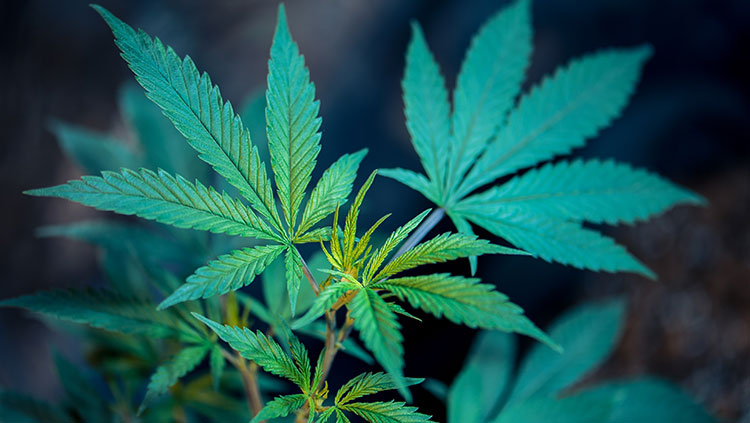Introduction: What is Bhang?
Bhang, a culinary tradition originating from the Indian subcontinent, is crafted from leaves of the cannabis plant. This unique preparation has found its way into various Indian beverages like bhang lassi and bhang thandai, often sold in specialized bhang shops. Despite its ancient roots, dating back to 1000 BC, bhang remains a significant part of cultural festivities such as Holi and Maha Shivaratri.
Ingredients and Uses
Utilizing the buds, leaves, and flowers of the female cannabis plant, bhang is created as an edible combination. Renowned for its potential medicinal properties, bhang is recommended in Ayurvedic medicine to alleviate symptoms such as nausea, vomiting, and physical discomfort. Additionally, bhang is incorporated into popular beverages like bhang goli, made from freshly ground bhang leaves and water, and desserts where it is blended with clarified butter (ghee), sugar, or jaggery.
Cultivation and Distribution
States like Bihar, Tamil Nadu, Rajasthan, and areas in the Sub-Himalayas boast extensive cultivation of bhang. Beyond India, bhang cultivation extends to countries including Pakistan, China, Iran, Iraq, and select regions of Europe.
Mechanism of Action: does bhang make u high?
The psychoactive effects of bhang stem from its cannabinoids, primarily THC (tetrahydrocannabinol) and CBD (cannabidiol). THC induces the characteristic “high” experienced by bhang users, while CBD is associated with potential health benefits. These cannabinoids interact with the body’s endocannabinoid system, influencing processes such as immunity, learning, memory, decision-making, and motor control.
As the popular Hindi song goes, “Why does it feel so good; Did you mix bhang in the air.” We’ve all danced to it during every Holi celebration. Well, the euphoric sensation experienced after consuming bhang is attributed to the psychoactive compounds present in it, which have the ability to alter the functioning of our brain and nervous system. These effects are primarily caused by cannabinoids, the main chemical constituents of the Cannabis sativa plant. Among the numerous cannabinoids found in bhang, the two that have undergone the most thorough study are:
THC, or tetrahydrocannabinol, is the primary psychoactive component of cannabis, responsible for inducing the “high” sensation in individuals after consuming certain foods and drinks laced with bhang.
CBD, or cannabidiol, is another significant cannabinoid believed to be responsible for the potential health benefits associated with bhang. Unlike THC, CBD is non-psychoactive.
Endocannabinoids, which are naturally occurring molecules within the body, exhibit resemblances to CBD and THC. They engage with cannabinoid receptors within the body and contribute to functions like immunity, learning, memory, decision-making, and motor control.
bhang side effects on brain: long-term effects on the brain
Impact of Marijuana on Brain Development
Numerous studies, both in animals and humans, have highlighted potential long-term adverse effects of marijuana exposure during crucial developmental stages. Rats exposed to THC, a primary psychoactive compound in marijuana, before or during adolescence exhibited significant learning and memory deficits later in life. Moreover, structural and functional changes in the hippocampus, a brain region crucial for memory, were observed in these rats. Additionally, adolescent THC exposure was found to alter the reward system in rats, potentially increasing susceptibility to self-administration of other drugs.
Human studies investigating marijuana’s impact on brain structure have produced conflicting results. While some suggest altered connectivity and reduced volume in brain regions related to executive functions like memory and impulse control, others have not found significant structural differences compared to non-users.
Further studies, including longitudinal research, indicate functional impairments in cognitive abilities associated with marijuana use. For instance, a study tracking young adults over a 25-year period found lower verbal memory scores among those with cumulative marijuana exposure. Notably, this effect persisted even after accounting for various confounding factors.
Moreover, several studies suggest a potential link between marijuana use and declines in IQ, particularly when initiated during adolescence and leading to persistent use disorder into adulthood. However, conflicting findings exist, and the complex interplay of factors such as genetics, environment, and duration of use complicates definitive conclusions.
Longitudinal studies, like the Adolescent Brain Cognitive Development (ABCD) study, funded by the National Institutes of Health, aim to provide comprehensive insights into the long-term effects of marijuana on brain development. By tracking young individuals from childhood to adulthood and utilizing advanced neuroimaging techniques, such studies aim to clarify the extent and mechanisms of marijuana’s impact, alone and in combination with other substances, on the developing brain.
Marijuana, Memory, and the Hippocampus
Marijuana use can impair memory due to the effects of THC on the hippocampus, a brain region crucial for memory formation. Research, primarily conducted on animals, suggests that exposure to THC during critical developmental stages, such as in utero or during adolescence, can lead to learning and memory difficulties later in life. Additionally, THC exposure during adolescence is associated with structural and functional changes in the hippocampus, contributing to cognitive impairment in adult animals.
As individuals age, they naturally experience neuronal loss in the hippocampus, which affects their ability to learn new information. Chronic THC exposure may accelerate this age-related neuronal loss. For instance, a study on rats exposed to THC daily for eight months, representing about 30% of their lifespan, showed a level of nerve cell loss at 11 to 12 months of age equivalent to that of unexposed rats twice their age.
Why is bhang bad and is it good for health?
For centuries, Bhang, commonly referred to as cannabis, has held a sacred status in Indian culture, particularly during the traditional celebration of Holi. Surprisingly, not many are aware that Bhang is listed among the top five Ayurvedic herbs in the Atharvaveda, showcasing its deep-rooted significance.
However, it’s important to acknowledge that despite its cultural and historical importance, the Cannabis sativa plant (excluding its leaves and seeds) is regulated under the NDPS Act of 1985.
Nevertheless, Bhang continues to be used during various Indian festivals such as Holi, Mahashivratri, and Ambubachi Mela in Guwahati, as well as by the Sikh Nihangs during Hola Mohalla. Its consumption during these occasions is often associated with providing pain relief, reducing stress, and promoting inner peace.
Benefits of Bhang:
Bhang offers a range of benefits including pain management and nutritional value. It is rich in fiber, calcium, and essential vitamins, making it a nutritious option. According to Ayurvedic principles, Bhang is believed to promote a pain-free, stress-free lifestyle and aid in achieving inner peace. Additionally, it is reported to improve appetite, aid digestion, and enhance sleep quality.
is bhang a drug
The practice of consuming bhang during Holi is especially widespread in North India, where the festival is marked with immense enthusiasm. In places like Mathura, an ancient town of religious significance for Hindus, the preparation of bhang begins with Sanskrit chants and prayers. In Mathura, some people consume bhang to stimulate their appetite, while others use it as a means to relax and de-stress. However, the epicenter of bhang consumption is Varanasi, where it is prepared on the famous ghats.
Bhang is available in various forms, including bhang goli, which is simply freshly ground cannabis mixed with water. Additionally, sweetened bhang golis are widely available, often considered not as a drug, but as a traditional aid for sleep and appetite stimulation. Bhang goli typically takes effect after around two hours, inducing a dreamlike meditative state in the user. Furthermore, bhang is incorporated into numerous Ayurvedic medicinal preparations, and bhang powder can be legally obtained from ayurvedic dispensaries.
How to avoid (treat) the bhang hangover
Bhang, known by various names such as cannabis, ganja, and charas, holds a significant place in Ayurvedic healing practices. Historically, these herbs were utilized for treating ailments, and despite lingering beliefs in their benefits, caution is advised when consuming bhang. While its therapeutic potential remains unproven, Ayurvedic experts suggest moderation in its consumption.
One popular preparation involving bhang is thandai, a blend of ground bhang leaves with condensed milk, dry fruit-nuts paste, rose petals, saffron, and other ingredients. However, its intoxicating and delicious nature increases the risk of overconsumption, leading to common adverse effects.
Excessive bhang consumption can result in dehydration, nausea, and headaches. Experts recommend moderation, stressing that bhang acts rapidly in the body. When used in appropriate amounts and in conjunction with other medicines, it can yield beneficial effects. Unlike ethanol, bhang activates bodily functions differently, resulting in a distinct hangover experience. It’s advised not to exceed 500mg of bhang intake to avoid potential harm.
The quality of bhang significantly influences its side effects, with products from roadside stalls posing a higher risk of impurities. This underscores the importance of sourcing bhang from reliable sources to mitigate potential health risks.
While Holi is a festival celebrated with joy and enthusiasm, caution is necessary to prevent unfavorable incidents associated with bhang consumption.
Precautions:
- Refrain from consuming bhang or bhang-laced delicacies on an empty stomach; eat something first.
- Avoid consuming heavy or fried foods, as they can exacerbate after-effects.
- Stay hydrated by drinking plenty of water and fluids to flush out toxins.
- Avoid taking painkillers after consuming bhang, as they can worsen acidity and headaches.
- Individuals with high blood pressure or heart diseases should avoid consuming bhang.
Cures:
- Drink lemon water rich in vitamin C and antioxidants to alleviate nausea.
- For post-bhang detoxification, consume fresh fruits, salads, and juices rich in fiber. Laxatives like Isabgol and Triphala can aid in cleansing the stomach.
- Consuming black tea or coffee can help suppress the effects of bhang in the brain.
Benefits of Bhang And Its Side Effects
Side Effects of Bhang
Cannabis contains chemicals that interact with specific sites in the brain and nerves, leading to effects such as reduced anxiety, euphoria, and pain relief. These effects make bhang both a medicinal aid and a recreational substance.
Who Should Avoid Bhang?
Common reactions to bhang consumption include increased heart rate and appetite. Therefore, individuals with asthma, heart conditions, and nerve-related diseases are advised to avoid bhang.
Is Bhang Addictive?
Bhang, like many substances affecting the body, can be addictive due to the presence of THC, a compound found in cannabis. Addiction risk varies based on factors such as genetics, family history, and mental health.
Symptoms of Bhang Addiction
Bhang addiction can manifest through various symptoms, leading to multiple issues. These symptoms may include:
- Bloodshot or red eyes
- Increased heart rate
- Persistent cough with mucus
- Dry mouth
- Impaired memory
- Anxiety and paranoia
- Lack of self-control
- Poor coordination
Safety Precautions When Consuming Bhang:
- Avoid driving after consuming bhang, as it impairs judgment, coordination, and reaction time, posing a risk while driving.
- Consume bhang with food; avoid an empty stomach.
- Stay hydrated by drinking plenty of water.
- Keep bhang away from pregnant women and children.
Benefits of Bhang
According to scientific research, the psychoactive substance known as bhang or marijuana has several potential health benefits when consumed responsibly and under expert supervision for specific medical purposes. These benefits include:
- Treatment of Various Ailments: Bhang is believed to have therapeutic effects on conditions such as dysentery, fever, digestion issues, appetite problems, and sunstroke.
- Anxiety and Stress Relief: Research indicates that bhang can help manage anxiety and stress by affecting the central nervous system and brain functions.
- Potential Treatment for Depression: Responsible consumption of bhang may offer relief from depression and address chemical imbalances in the brain.
- Management of Neurological Disorders: Bhang has been associated with the treatment of wounds, diseases, and various neurological disorders.
- Alleviation of Chemotherapy Side Effects: Studies in the United States suggest that marijuana can help reduce nausea and vomiting in individuals undergoing chemotherapy, although long-term usage should be approached cautiously.
- Pain Relief: Bhang may alleviate pain associated with inflammatory conditions like rheumatoid arthritis and fibromyalgia, with a significant percentage of users reporting pain reduction.
- Improvement of Sleep Quality: Responsible consumption of marijuana may improve sleep in individuals affected by insomnia, chronic pain, fibromyalgia, multiple sclerosis, and sleep apnea.
- Appetite Stimulation: Bhang can be beneficial for individuals seeking to gain or maintain weight, as it may increase appetite.
- Potential Treatment for Various Conditions: Bhang is considered a potential remedy for conditions such as dementia, irritable bowel syndrome, Tourette’s syndrome, schizophrenia, and Parkinson’s disease.
It’s important to note that while bhang may offer these benefits, its consumption should be approached with caution and under expert guidance, particularly considering individual health conditions and potential risks.
FAQs about Bhang:
What is bhang?
Bhang is a traditional preparation originating from the Indian subcontinent, crafted from the leaves of the cannabis plant. It is commonly used in various beverages and desserts, especially during cultural festivals like Holi.
What are the ingredients and uses of bhang?
Bhang is made by combining the buds, leaves, and flowers of the female cannabis plant into an edible mixture. It is renowned for its potential medicinal properties and is recommended in Ayurvedic medicine for alleviating symptoms such as nausea, vomiting, and physical discomfort.
Where is bhang cultivated and distributed?
Bhang cultivation is widespread in states like Bihar, Tamil Nadu, Rajasthan, and areas in the Sub-Himalayas. Additionally, it is cultivated in countries like Pakistan, China, Iran, Iraq, and select regions of Europe.
How does bhang affect the brain?
The psychoactive effects of bhang are primarily attributed to cannabinoids, such as THC (tetrahydrocannabinol) and CBD (cannabidiol). These cannabinoids interact with the body’s endocannabinoid system, influencing processes like immunity, learning, memory, decision-making, and motor control.
What are the benefits and side effects of consuming bhang?
Bhang offers potential health benefits such as pain relief, anxiety reduction, and appetite stimulation. However, excessive consumption can lead to adverse effects like dehydration, nausea, and headaches. It’s crucial to consume bhang responsibly and under expert guidance.





Leave a Reply